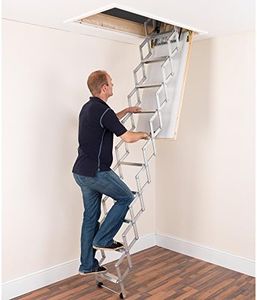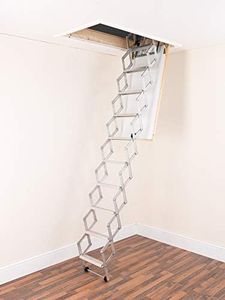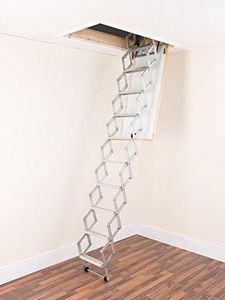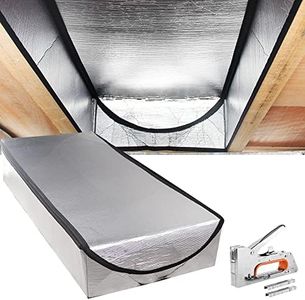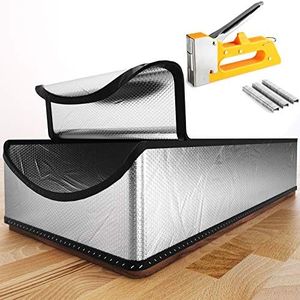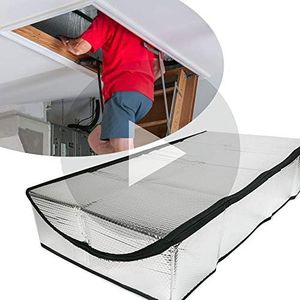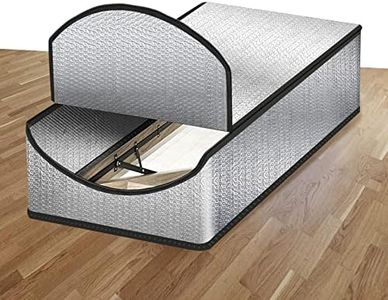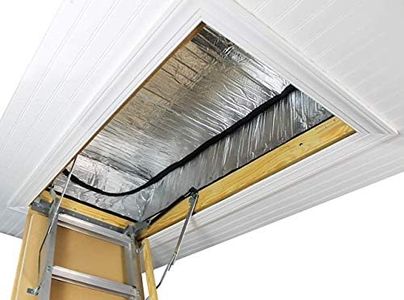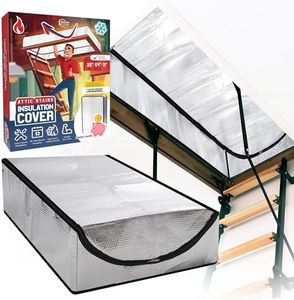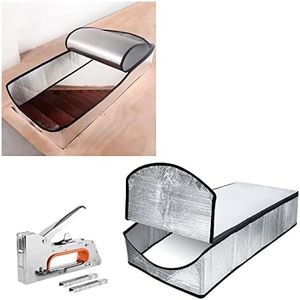We Use CookiesWe use cookies to enhance the security, performance,
functionality and for analytical and promotional activities. By continuing to browse this site you
are agreeing to our privacy policy
10 Best Attic Pull Down Stairs
From leading brands and best sellers available on the web.Buying Guide for the Best Attic Pull Down Stairs
Choosing attic pull-down stairs is mostly about ensuring safe, convenient, and lasting access to your attic space. Since this product becomes a functional part of your home, it's important to think about your attic's dimensions, how often you'll use the stairs, and whether you'll need to carry large or heavy items up and down. Focus on features that suit your space and lifestyle to make sure your attic access is comfortable and secure.Ceiling Height CompatibilityCeiling height compatibility refers to the range of ceiling heights that the attic stairs can safely and comfortably fit. This spec is important because mismatched stairs will either not reach the floor or be dangerously steep. Most products are divided into ranges like 7–8 feet, 8–10 feet, or up to 12 feet ceilings. To pick the right one for you, measure your ceiling height precisely where the stairs will go and choose a model rated for that range.
Load CapacityLoad capacity tells you the maximum weight the stairs can safely support, including the person plus whatever is being carried. It’s crucial for safety, especially if you'll regularly be moving boxes or equipment to the attic. Common categories are about 250, 300, and 350 pounds or higher. If you’ll just be occasionally moving lightweight items, a lower capacity may suffice, but for frequent use or heavier objects, opt for a higher-capacity model.
Stair MaterialStair material affects the stairs' strength, weight, durability, and even appearance. Wood, aluminum, and steel are the most common. Wood is quieter, doesn’t get cold, and looks homey, while aluminum is lighter and often easier to lift, and steel offers maximum durability and weight support. Choose based on how much weight you need to support, whether you value ease of lifting, and your climate (as metal can feel cold or conduct condensation).
Opening Size and Rough Opening DimensionsThe opening size describes how much room the stairs need in your ceiling, while rough opening dimensions refer to the framing requirement for installation. This matters because the stairs must fit both in the ceiling and the attic without interference. Openings typically range from smaller (about 22.5 x 54 inches) to larger sizes for easier access and carrying bigger objects. Consider what you’ll need to bring up and down, and make sure your existing opening or planned cutout matches the product’s needed dimensions.
Step Width and DepthStep width and depth describe the size of each step. Width impacts how comfortable and secure your footing is, and depth affects how well your whole foot fits on the step. Narrow or shallow steps make climbing and carrying things more challenging. Standard step widths can range from 10 to 15 inches, and depths from about 2 to 4 inches. If you expect frequent use or need extra stability, select stairs with wider and deeper steps.
Fold Type (Sections or Telescoping)Fold type refers to how the stairs collapse and store into the ceiling. Common types include those that fold into two or three hinged sections and telescoping stairs that slide into themselves. Multi-section folding types are traditional and often more budget-friendly, though they take up more horizontal attic space. Telescoping models are more compact and often metal. If you have limited attic headroom or need a streamlined solution, telescoping may be better, while standard fold-outs are usually fine for most homes.
Insulation and Air SealingSome attic stairs include insulation in the cover panel and/or features to minimize air leaks. This helps keep your home more energy efficient by blocking drafts between the attic and living spaces. Insulation values vary, with higher ratings better for extreme climates. If your attic is unconditioned or you want to save on heating and cooling, prioritize models with higher insulation and good sealing.
Handrails and Safety FeaturesHandrails and other safety features like anti-slip steps make climbing safer, especially for kids or anyone less steady on their feet. Models may offer fold-down handrails, larger treads, or textured surfaces. Prioritize these if you'll climb frequently, carry items, or need extra security ascending or descending.
